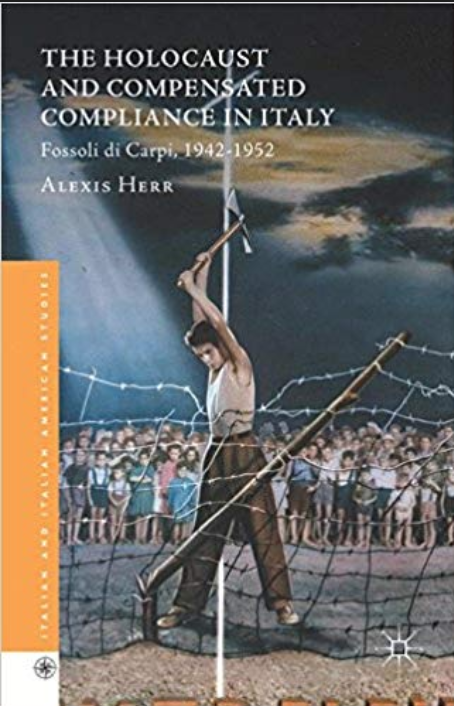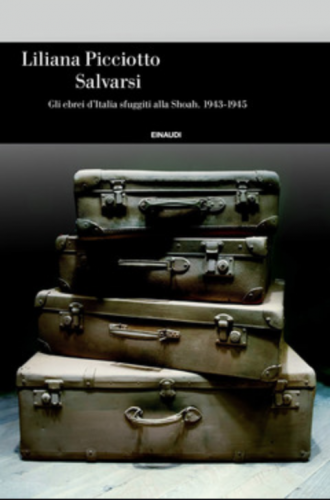
Interpretations of the role of the Italian people in the Shoah have until recently been dominated by the image of italiani brava gente [the good Italians]. According to this view, generally accepted both in Italy and internationally, Italian soldiers – the occupation forces in the Balkans no less than the units fighting in North Africa to advance the aims of the fascist state – unlike their Nazi counterparts, perpetrated no atrocities. On the contrary, the claim has often been made that the Italian military did a great deal to help Nazi victims. That is, the general populace did not collaborate with the Nazi program of extermination, but sheltered thousands of the persecuted instead. To demonstrate the veracity of this, the fact is usually cited that the majority of Italy’s Jewry survived the war.
Some three decades of scholarly research have now proven this vision wrong. Historical reality unfolded very differently: the military under Mussolini acted upon orders both violent and harsh, deporting civilians and sending them to concentration camps. Boosted by the burst of activity in connection with the 50th anniversary of the 1938 enactment of the Leggi razziali [Racial laws] in Italy, Italian historiography has uncovered the instrumental function which the fascists, as well as society as a whole, performed in hunting down Italy’s Jews. Part of what these findings spelled out was the demonstrated existence of a pre-war culture of local anti-Semitism.
The book by Alexis Herr, an American scholar of the Shoah who focuses on the case of Italy in particular, shows how these findings are now, at last, starting to cross national borders. Taking as a case study the developments at Fossoli di Carpi, a concentration camp located in a village near Modena in northeastern Italy, Herr sets out to dismantle the stereotyped misconception of the italiani brava gente.
The camp at Fossoli di Carpi operated during 1942-52, serving a variety of purposes during these years. Herr points out that the study focuses on the “ten-year history of Fossoli – the camp from which the Germans transferred Levi to Auschwitz – and its relationship with the neighboring town of Carpi to address how civilians not targeted for annihilation took part in a system set on mass murder and then evaded responsibility for Judeocide after the war” (p. 2). In her brief introduction, the author explains a number of the terms she uses to analyze the attitude of the Carpigiani (the locals at Fossoli di Carpi) to the events of the war. Herr resorts to the notion of “bystanders” to elaborate how by
“…scrutinizing local contributions to camp operations, two modes of civilian support of atrocity outside of the perpetrator-victim dichotomy emerge. The most common is the passive action of individuals whose lives remained separate from all matters concerning the camp. Others came to engage in camp affairs through active action, as individuals seeking or presented with opportunities to gain financial compensation for their contributions to camp functions. Here I speak specifically of economic incentives for cooperating with totalitarian regime set genocide. I call this compensated compliance, or acquiescence for economic gain.” (p. 4)
The book is divided into two parts. The first consists of four chapters retracing the history of the camp at Fossoli during the war. The camp opened in 1942 to take in prisoners of war (this was the so called POW era); after the Armistice of September 8, 1943, German authorities and the Repubblica Sociale Italiana (RSI) used the camp as an internment facility for civilians and Jews destined for the Nazi lagers. To shed light on the part played by the local authorities and the Carpigiani in the camp’s functioning, Herr details how
“...local laborers’ and businesses’ economic partnerships with the camp established during the POW era of Fossoli continued when the camp took in Jews and civilians. The workers and companies carried on as before. Consorzio Agrario provinciale, for example, supplied lumber to build barracks and fuel stoves.” (p. 82)
Civilians and local authorities in the Repubblica Sociale both had a share in the Nazi plan. Those making a profit from camp operations were incorporated into a system “that annihilated Jews and thus directly encouraged genocide” (p. 83). A stark parallel is articulated between this kind of active involvement and the silence self-consciously maintained by spectating neighbors: “Carpi’s citizens’ decision to remain silent – whether for self-preservation,” fear, “or economic gain – ultimately encouraged town leaders to carry out Nazi demands” (p.72). The book’s first part concludes: “the history of Fossoli shows that genocide happened, in part, because of silent witnesses, compensated compliers and acquiescent followers” (p. 89).
The book’s Part II, consisting of two chapters, covers the history of Fossoli during the years following the war. Here the author “examines the postwar political, social and economic conditions that shaped Fossoli’s legacy as a symbol of Italian victimization during German occupation” (p. 3). This victimization accounts for the emergence of the brava gente image; “The Politics of Blame,” one of the chapter headings, is an expression of this. After the end of the war, the Allies turned the camp into a prison for war criminals and RSI fascists, using it later as a camp for refugees and DPs. Herr suggests that this post-WWII shift in camp function helped subject to oblivion what Fossoli had been in the none too distant past; local responsibility for the perpetration of this past would also be blurred with each new round of the camp’s functional designations: “we shall see that each incarnation allowed Carpi collaborators and compliers to escape scrutiny and become members of the ‘brava gente’” (p. 93). This kind of absolution and eschewing of responsibility reflect a more general tendency:
“National efforts to obscure Fascist crimes made Carpi authorities’ elision of responsibility possible. Town leaders – who had transitioned from providing for Fossoli’s wartime needs to managing outstanding bills and responding to missing person inquiries – followed suit and blamed the Nazi forces. These postwar occupations and a blanket refusal to accept responsibility supported an overly simplified image of all Carpigiani as victims despite the fact that some had willingly collaborated with Fascist and Nazi forces.” (p. 99).
During 1947-52, the camp went through a metamorphosis: through the efforts of Don Zeno Saltini, a Catholic priest, it became home to Nomadelfia, a utopian Christian community. The creation in situ of a Catholic humanitarian center marks the ultimate “postwar amnesia blanketing Italian collaboration” during the Shoah: the book cover features a propagandistic postcard showing barbed wire and shacks in the process of being removed in order for accommodations for orphans and believers to be constructed in their place. The monograph concludes with the author’s reflections on the Carpigiani’s awareness of the import of their actions and on what they knew of the Nazi program of extermination:
“Many Carpigiani […] became imbedded in a system set on destruction and mass murder via the Fossoli camp, perhaps without realizing that they were getting their hands dirty. It is debatable how much bakers and laborers with contracts to provision and to work at Fossoli knew about the Jews’ final fate. One thing is for sure: had they wanted to know, they could have found out.”(p. 144).
This history of the camp at Fossoli draws on essential primary sources (including Italian state archives at Carpi and Modena) along with some of the most up-to-date research and bibliography. Herr deserves special credit for her thorough investigation of Italian responsibility during the Shoah, a topic that has been consistently neglected by international scholarship. The period in question, 1942-52, also makes for an original focus by extending the study both into and beyond the years of the war. At the same time, however, Herr’s near-exclusive concern with the italiani brava gente makes it impossible to do justice to other important elements which shaped the history of the camp, such as administrative procedural continuity in various frameworks both during and after the war. Finally, a formal note is called for: in a work centered on a national Italian theme and taking up a local case study, some basic proofreading is in order so as to rectify the numerous instances of misspelled Italian names and common Italian words.
Matteo Stefanori, Università degli Studi della Tuscia, Viterbo
Alexis Herr, The Holocaust and Compensated Compliance in Italy. Fossoli di Carpi, 1942-1952, (Basingstoke-New York: Palgrave Macmillan, 2016), pp. xvi+227.
DOI: 10.48248/issn.2037-741X/683
